Why I Just Quit DSA
After over four decades as a member of the Democratic Socialists of America, one of the group’s founding members is leaving in sorrow and anger.
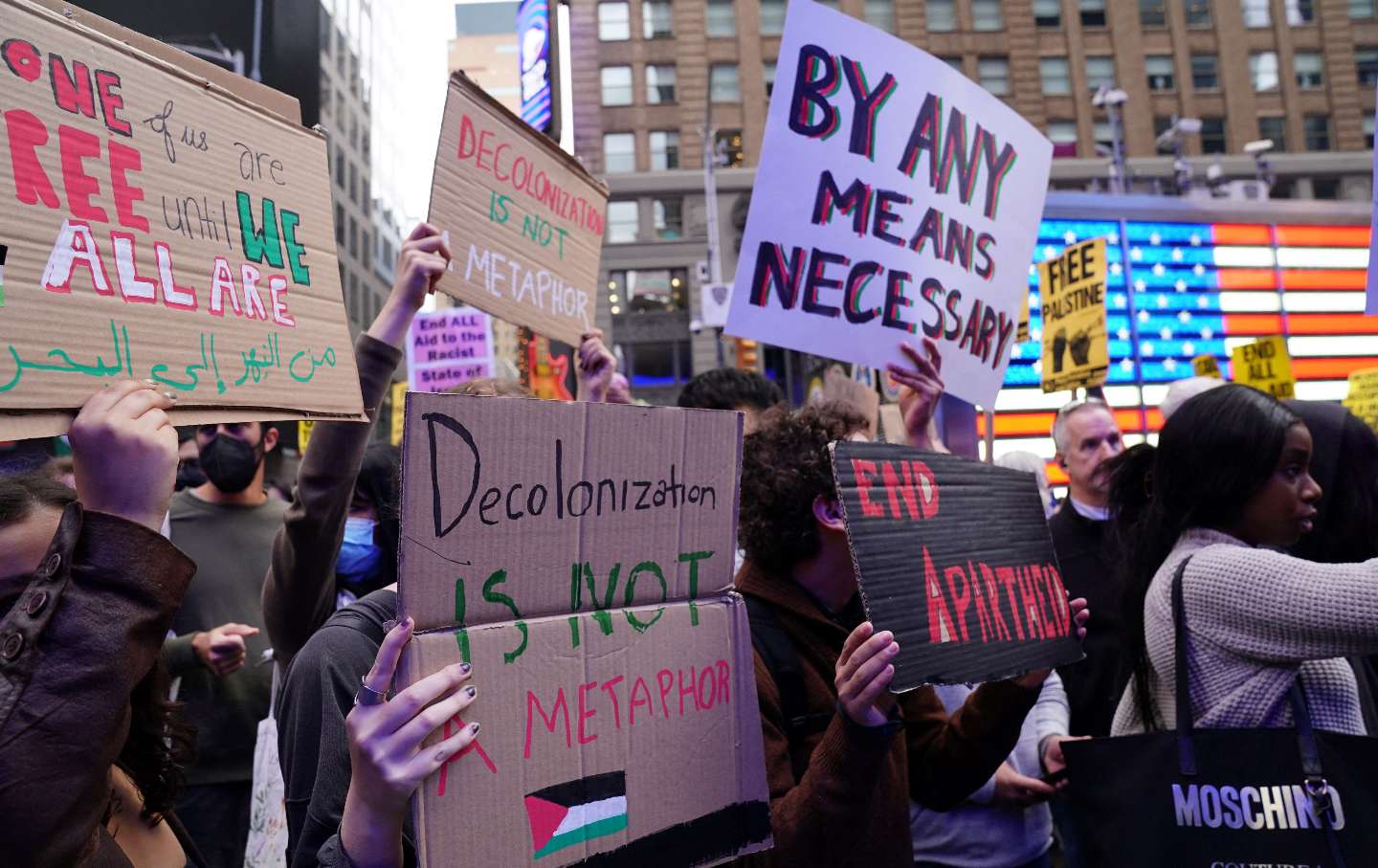
I’ve belonged to only two nationally organized left-wing groups in my life: the first, Students for a Democratic Society (SDS) for just over a year; the second, Democratic Socialists of America (DSA) for 41 years. My membership in SDS ended in 1969, when I was 18 years old, without any input or agency on my part, when the organization collapsed around me in a chaotic maelstrom of rival manifestos, mass walkouts, fervid chanting, and a few fistfights, all of which scattered the group’s thousands of members to the winds. My membership in DSA ended with considerably less drama last week, when at a somewhat more advanced age I resigned from the organization via an e-mail. I left to protest the DSA leadership’s politically and morally bankrupt response to the horrific Hamas October 7 anti-Jewish pogrom that took the lives of 1,400 people, mostly civilians, and saw over 200 hostages carried off to Gaza, both groups of victims including children and infants.
Whether DSA will now follow SDS into political oblivion is for the future to tell, but one thing a lifetime of studying the history of American radicalism suggests to me is that, as a rule, there are rarely second acts in the lives of organizations captured by left sectarian “entryists.”
What do I mean by “entryists”? In left-wing parlance, the term refers to tightly organized groups who, without sharing the beliefs of larger and more loosely organized bodies, join and proceed to either wreck or, where possible, capture them for ends at odds with the spirit and purpose of the original members. Without descending too deeply into the weeds of sectarian history, entryism has been a recurring phenomenon on the American left since the 1930s.
SDS and DSA are products of very different eras, but share some common experiences. Both began as small organizations, each with a clear commitment to democratic values, as embodied in their names, founding statements, and leaders. Both subsequently underwent a sudden expansion in membership that at first seemed promising but in the end had unexpected and, at least in SDS’s case, fatal consequences. SDS grew from under 15,000 members in the spring of 1965 to somewhere in the vicinity of 100,000 by the time I joined in the fall of 1968. Among those tens of thousands of recruits, mostly with no previous involvement in any left-wing organization, there were also a few hundred members of the Progressive Labor Party (PL). PL was a “democratic-centralist” (i.e., a highly disciplined and hierarchically organized) organization, which had split off some years earlier from the American Communist Party, looking to Maoist China for inspiration. PL’s “cadre” (the military language went along with the authoritarian outlook) proved very adept at taking over SDS’s larger campus chapters, because of well-honed organizational skills and high energy levels (showing up for every meeting, staying to the end, displaying both an unwillingness to compromise and an intolerance of dissent.)
In response, other cadre-like factions began to organize, at first in political self-defense, and soon in imitation of the ultra-revolutionary posturing PL had imported into SDS. The most famous of these became known as the Weathermen—the group that in the fall of 1969 would close down SDS, taking a few dozen committed cadres underground to wage “armed struggle,” i.e., plant bombs. All told, in that last frantic year of SDS’s existence, the factions in the organization (PL’s “worker-student alliance,” Weatherman, one or two others) amounted to no more than a few thousand members. The other 98,000 rank-and-filers (including me, and most of the small chapter to which I belonged) helplessly watched the unfolding disaster that left us politically homeless. (For a thoughtful insider’s account of SDS’s downfall, see the memoir by ex-Weatherwoman Cathy Wilkerson, Flying Close to the Sun, published in 2008.)
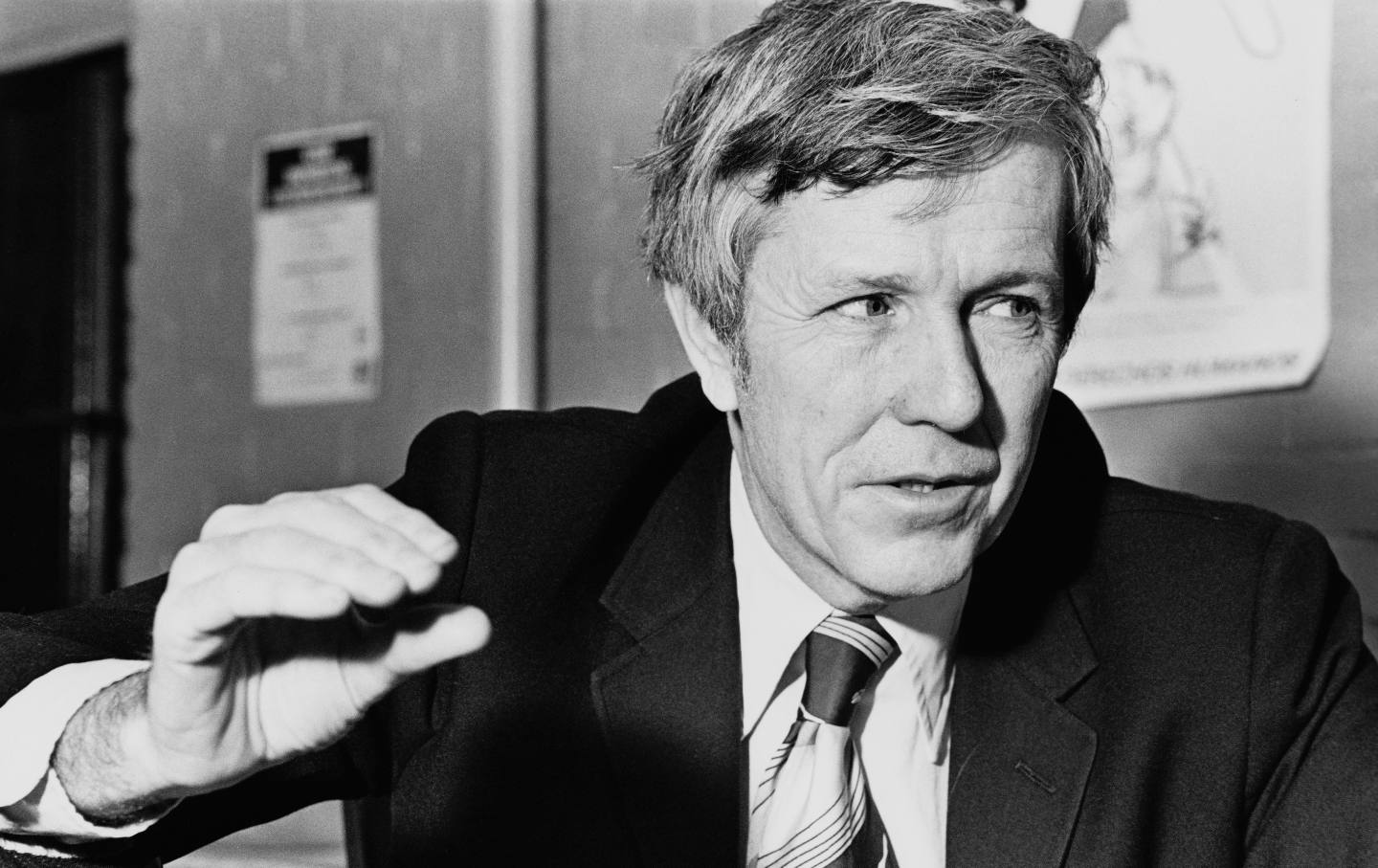
When DSA was founded in 1982 it represented the merger of two groups, one based in the remnants of the labor/socialist left, the other drawn mostly from veterans of the New Left, both determined to learn from the political disasters of the 1960s. Under the leadership of cochairs Michael Harrington and Barbara Ehrenreich, DSA seemed to me at the time to embody the best of both traditions on which it drew, basing its political values equally on the two descriptors in its chosen name, “democratic” and “socialist.” And it brought to its political mission a welcome degree of humility. We would try, in Harrington’s memorable phrase, to be “the left wing of the possible.”
As it turned out, the 1980s were not the most promising decade to launch a new venture on the left. Nor were the 1990s, or the first decade of the 21st century much better. DSA, which fluctuated between 5,000 and 6,000 members over those years, was much larger than the purist sects further to its left who generally counted memberships in the hundreds. But DSA was still small. And aging.
And then suddenly, in the second decade of the 21st century, DSA had a growth spurt, not unlike SDS in the mid-1960s, bringing it belatedly to national political relevance. Tens of thousands of eager young recruits were energized by the 2016 presidential bid of democratic socialist Bernie Sanders (although Sanders was not a member of DSA), and the election to Congress of DSA members Alexandria Ocasio-Cortez and Rashida Tlaib in 2018, joined by Cori Bush and Jamaal Bowman in 2020.
Unlike my generation, for whom the overriding issue of the late 1960s was opposition to the war in Vietnam, most of DSA’s new members were attracted to the organization by its proposals for substantial, vital, and above all realizable domestic reforms (Medicare for All, the Green New Deal, student debt relief, tenants’ rights, etc). As a result, between 2016 and 2020 DSA’s membership expanded from 6,000 to 90,000-plus, while dropping the average age of members from 60-something to 20-something. Scores of new chapters opened up, including many located in cities and states that haven’t seen an active socialist presence since the era of Eugene Debs, if ever. And those young, energetic recruits proved remarkably politically savvy and successful in the field of electoral politics, not only elevating four members to Congress, but also sending nearly 200 others to state legislatures, city councils, and other offices, almost always as Democrats.
All well and good—except for the return of the entryists. Suddenly, in the eyes of revolutionary purists in a host of small competing sects, DSA was no longer to be sneered at as just a reformist swamp. “Why rob banks?” career criminal Willie Sutton was once allegedly asked by a reporter. “Because that’s where the money is,” he replied. The exchange is apocryphal, but substitute warm bodies for cold cash, and it offers a concise explanation for DSA’s sudden attractiveness to sectarian strategists. Unknown numbers—hundreds, perhaps more—started joining in 2016, some of them former members of defunct Marxist-Leninist groups, others (in violation of DSA bylaws) still belonging to and carrying out the agendas of such groups. They proceeded to quarrel and compete among themselves, splitting and recombining under various banners like “Red Star,” “Marxist Unity Group,” and even the “Communist Caucus.” But they remained united in one overarching shared aim—to take a well-meaning, not particularly well-organized, and essentially social democratic organization still committed in practice to the original DSA vision of creating “the left wing of the possible,” and reinvent it as the mass vanguard party of the proletariat that somehow they had never been able to pull off while operating under their own banners of deepest red.
DSA, meanwhile, thrived between 2016 and 2020—because it proved it could win victories in the here-and-now, give-and-take world of electoral politics. And that, ironically, was intolerable to the entryists (who preferred to refer to themselves as “partyists”), because they didn’t want socialists to remain as a wing of, or even a loyal opposition within the Democratic Party. They wanted a break, in the not terribly distant future, from the intolerable compromises required to appeal to mainstream voters and to compromise with mainstream politicians. And they also believed that DSA members elected to public office were, first and foremost, obliged to follow the positions adopted by the organization, rather than their constituents or their own conscience, as if they were already subordinate to the dictates of an old-fashioned Marxist-Leninist central committee.
At each of DSA’s biannual conventions in recent years, the sectarian caucuses (comprised of entryists and those they recruited) gained strength in the organization’s ruling body, the 16-member National Political Committee, until finally achieving a working majority in the August 2023 convention. There is a curious aspect to this influx of new leaders. Virtually nobody in the organization, outside the ranks of the various caucuses, knows who they are, or what they stand for. (DSA members, take this test. Go to this website, and see how many names you recognize, and of those you do know, how many can you assign to the caucus or viewpoint they represent?)
Popular
“swipe left below to view more authors”Swipe →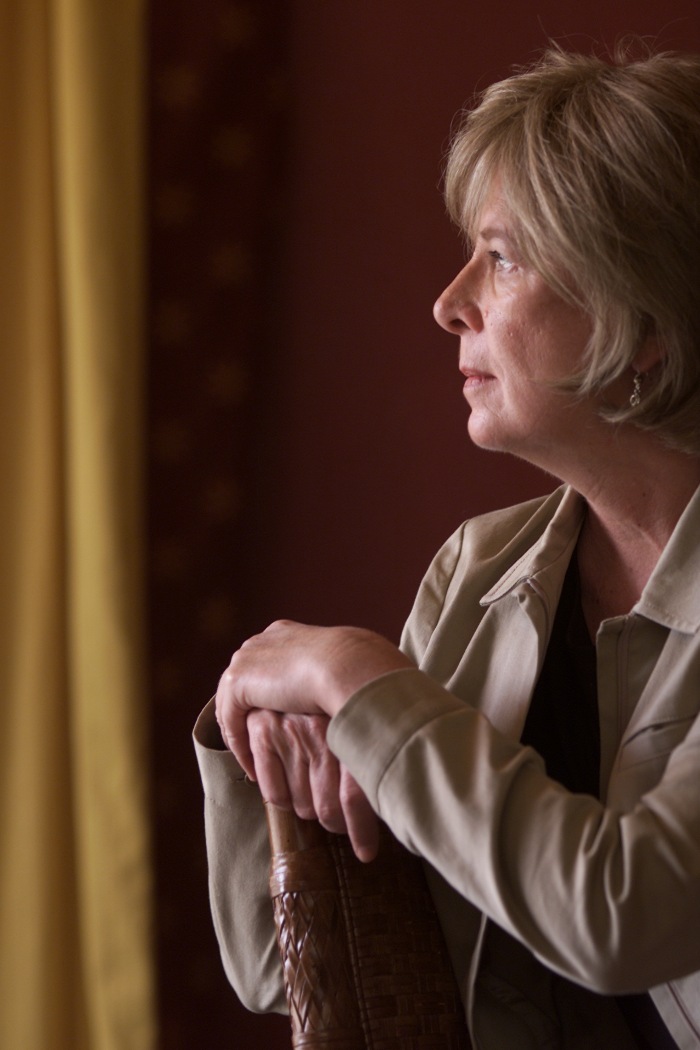
In the old days, everyone in DSA knew who Mike Harrington was and who Barbara Ehrenreich was and how they agreed upon or differed on organizational priorities. The same was true of other leaders in responsible positions in the old DSA, who tended to have long and public track records as organizers and writers. Whatever its shortcomings, there was nothing mysterious about the inner workings of DSA back then. Can the same be said today?
As the new hard-line caucuses gained influence, the issue of Palestine became ever more important in DSA’s internal political culture. In 1982, when DSA began, support for Labor Zionism was widespread in its ranks. But over the next several decades, the Labor Party faded as a political force in Israel to be replaced by right-wing Zionists, and the prospects for a “two-state” solution to the Palestinian question evaporated. I doubt if many DSAers today would describe themselves as Zionists of any stripe, although many (at least many of my acquaintance), remain committed to Israel’s right to exist as well as its right—within limits that it too often violates—to defend its national security. In any case, there are few if any DSAers, veterans as well as newcomers, who are not critics of Israel’s repressive policies in the West Bank and Gaza.
But that doesn’t account for the singularly important role of Palestine in DSA’s rather short list of international concerns, completely overshadowing the attention paid, for example, to Russia’s invasion of Ukraine, or to the rights of other oppressed peoples, like the Kurdish Muslims, or China’s Uyghur Muslims. Concern for Palestine, entirely legitimate in itself, also served other purposes for DSA’s new sectarian leadership, furnishing a convenient stick to beat DSA’s moderate wing if it wasn’t willing to embrace the most extreme positions on the Palestinian question—up to and including denying Israel’s right to continued existence.
Starting as far back as the 2017 national convention, chants of “From the River to the Sea, Palestine Will Be Free” began to be heard at DSA gatherings, and support for the Boycott, Divestment, and Sanctions (BDS) movement targeting Israel became a litmus test within the organization for political purity. For the sectarians, discrediting elected DSAers who fail that test helps to move the organization closer to the desired break with the Democratic Party. There was a serious push within DSA to sanction or even expel Representative Bowman for voting to approve US funding for Israel’s Iron Dome missile-defense system, and for traveling to Israel in 2021 on a trip sponsored by the liberal Zionist (and pro-Palestinian rights) group J Street. (The effort failed, but Bowman quietly let his membership to DSA lapse in 2022—chalk one up for the “partyists.”)
Which brings us to the events of early October, which will not require an elaborate retelling, except for those who spent the last several weeks on the dark side of the moon. Hamas, a fanatic right-wing religious fundamentalist group committed to the destruction of Israel and the expulsion of its Jewish population, launched its offensive in the early morning hours of October 7, murdering, torturing, raping, or kidnapping those unfortunate enough to encounter its marauders. Bernie Sanders responded the same day declaring, “I absolutely condemn the horrifying attack on Israel by Hamas and Islamic Jihad. There is no justification for this violence, and innocent people on both sides will suffer hugely because of it. It must end now.” Alexandria Ocasio-Cortez responded as well, saying, “I condemn Hamas’ attack in the strongest possible terms. No child and family should ever endure this kind of violence and fear, and this violence will not solve the ongoing oppression and occupation in the region.”
DSA’s National Political Committee did not agree with the two most prominent democratic socialists in American public life. Its statement on October 7 made no mention—let alone offering any criticism—of Hamas, declaring instead, “Today’s events are a direct result of Israel’s apartheid regime—a regime that receives billions in funding from the United States.” That same day the New York City DSA chapter urged its members to attend a rally in midtown Manhattan called for the following day by another left-wing group under the slogan “All Out for Palestine.” At that event, on October 8, not 24 hours after the attack, one speaker would giddily note the slaughter by Hamas of hundreds of young Israelis attending a concert in approving terms: “[T]he resistance came in electrified hang gliders and took at least several dozen hipsters.” That got a big laugh. There probably weren’t a lot of DSAers in the audience, and no DSAers spoke from the podium, but the damage was done—and not undeserved. Politically, you’re judged by the company you keep.
Worse was to come at DSA’s state and local levels. Connecticut DSA tweeted on October 8, “Yesterday, the Palestinian resistance launched an unprecedented anti-colonial struggle,” without providing any of the messy details as to what that “struggle” involved. San Francisco DSA issued a statement on October 9 declaring, “Socialists support the Palestinian people’s, and all people’s, right to resist and fight for their own liberation. This weekend’s events are no different.” Seattle DSA circulated a “toolkit” for responding to the events of October 7 produced by a group calling itself the “National BDS & Palestine Solidarity Working Group,” including a list of demands, the first two of which read:
End ALL US aid to Israel. Not just military aid—all aid to Israel supports the colonization of Palestine and continued violence against Palestinians.
Decolonization—from the river to the sea. Not just Gaza and the West Bank, we want all of ’48.
Under the toolkit’s heading “Messaging Guidance,” DSAers were instructed that, “liberating colonized land is a real process that requires confrontation by any means necessary.… Resistance comes in all forms—armed struggle, general strikes, and popular demonstrations. All of it is legitimate, and all of it is necessary.” As for those killed on October 7, the authors explained matter-of-factly, “Settlers are not ‘civilians’ in the sense of international law, because they are military assets used to ensure continued control over stolen Palestinian land.”
There were many eloquent responses to DSA’s all-but-explicit endorsement of Hamas’s horrifying atrocities, including those by Michelle Goldberg in The New York Times, and Joshua Leifer in Dissent. But the one I’d like to highlight is from comedian, writer, and actor Sarah Silverman, posted on her Instagram account on October 8, after reading the National Political Committee’s initial response to the events of the previous day:
The DSA of which I was a proud lifetime member, has lost me forever… Over 1000 slaughtered as of now. Girls raped over the bodies of their friends. These are kids, babies, children, teens, elderly, many of whom like my family march in the streets nightly protesting Netanyahu and the occupation THAT’S WHO HAMAS MURDERED you FUCKS. knowing Israel@will retaliate- do you get that they don’t give a FUCK about Palestinian lives?????
So why am I quitting DSA? There are many reasons. But in the end, the most important comes down to the Sarah Silverman Rule #1 for Judging One’s Political Associates. An organization that can’t take a stand condemning a right-wing terrorist group that set out to murder as many Jewish civilians, including children and infants, as it can lay its hands on, has forfeited the right to call itself democratic socialist. It has, as Sarah says “lost me forever.”
Author note: This piece has been changed to clarify that a statement came from a DSA working group, not the national organization.
An urgent message from the Editors
As the editors of The Nation, it’s not usually our role to fundraise. Today, however, we’re putting out a special appeal to our readers, because there are only hours left in 2025 and we’re still $20,000 away from our goal of $75,000. We need you to help close this gap.
Your gift to The Nation directly supports the rigorous, confrontational, and truly independent journalism that our country desperately needs in these dark times.
2025 was a terrible year for press freedom in the United States. Trump launched personal attack after personal attack against journalists, newspapers, and broadcasters across the country, including multiple billion-dollar lawsuits. The White House even created a government website to name and shame outlets that report on the administration with anti-Trump bias—an exercise in pure intimidation.
The Nation will never give in to these threats and will never be silenced. In fact, we’re ramping up for a year of even more urgent and powerful dissent.
With the 2026 elections on the horizon, and knowing Trump’s history of false claims of fraud when he loses, we’re going to be working overtime with writers like Elie Mystal, John Nichols, Joan Walsh, Jeet Heer, Kali Holloway, Katha Pollitt, and Chris Lehmann to cut through the right’s spin, lies, and cover-ups as the year develops.
If you donate before midnight, your gift will be matched dollar for dollar by a generous donor. We hope you’ll make our work possible with a donation. Please, don’t wait any longer.
In solidarity,
The Nation Editors
More from The Nation
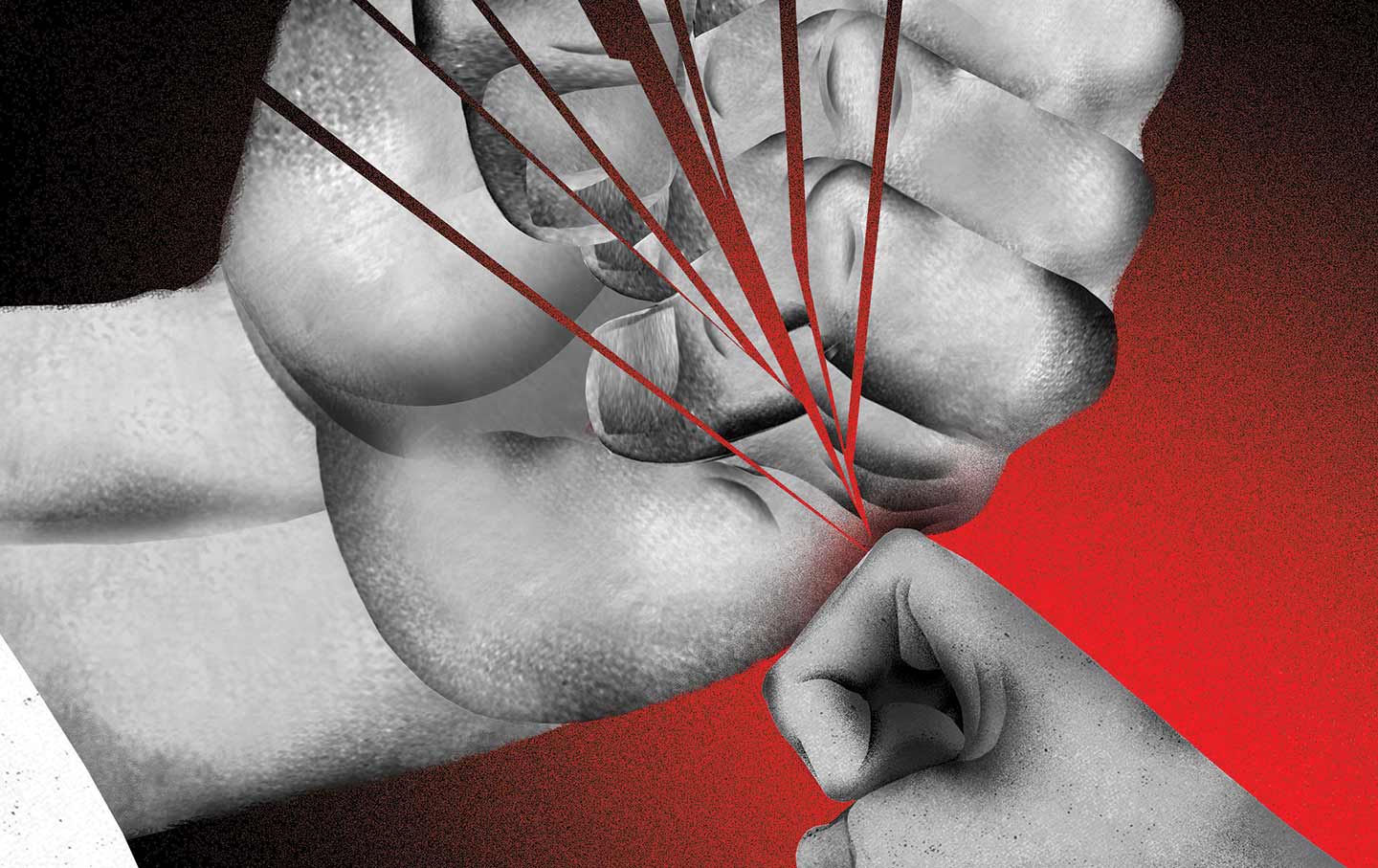
Honoring the Progressives Fighting for Our Democracy Honoring the Progressives Fighting for Our Democracy
These activists and artists, pastors, and political leaders know what has always been true: The people have the power.
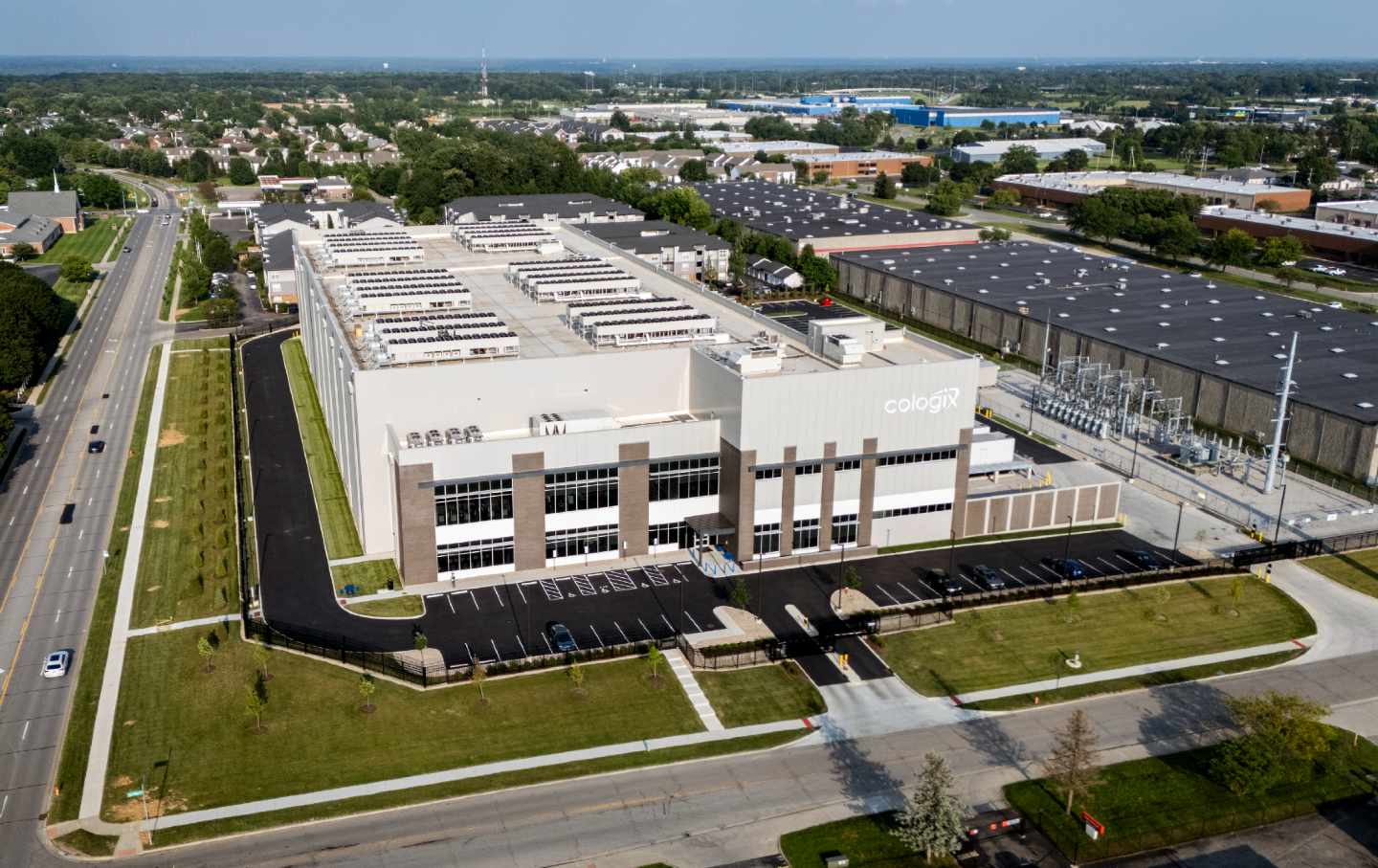
Anger at Corporate Power Is Everywhere Anger at Corporate Power Is Everywhere
It should guide the Democrats.
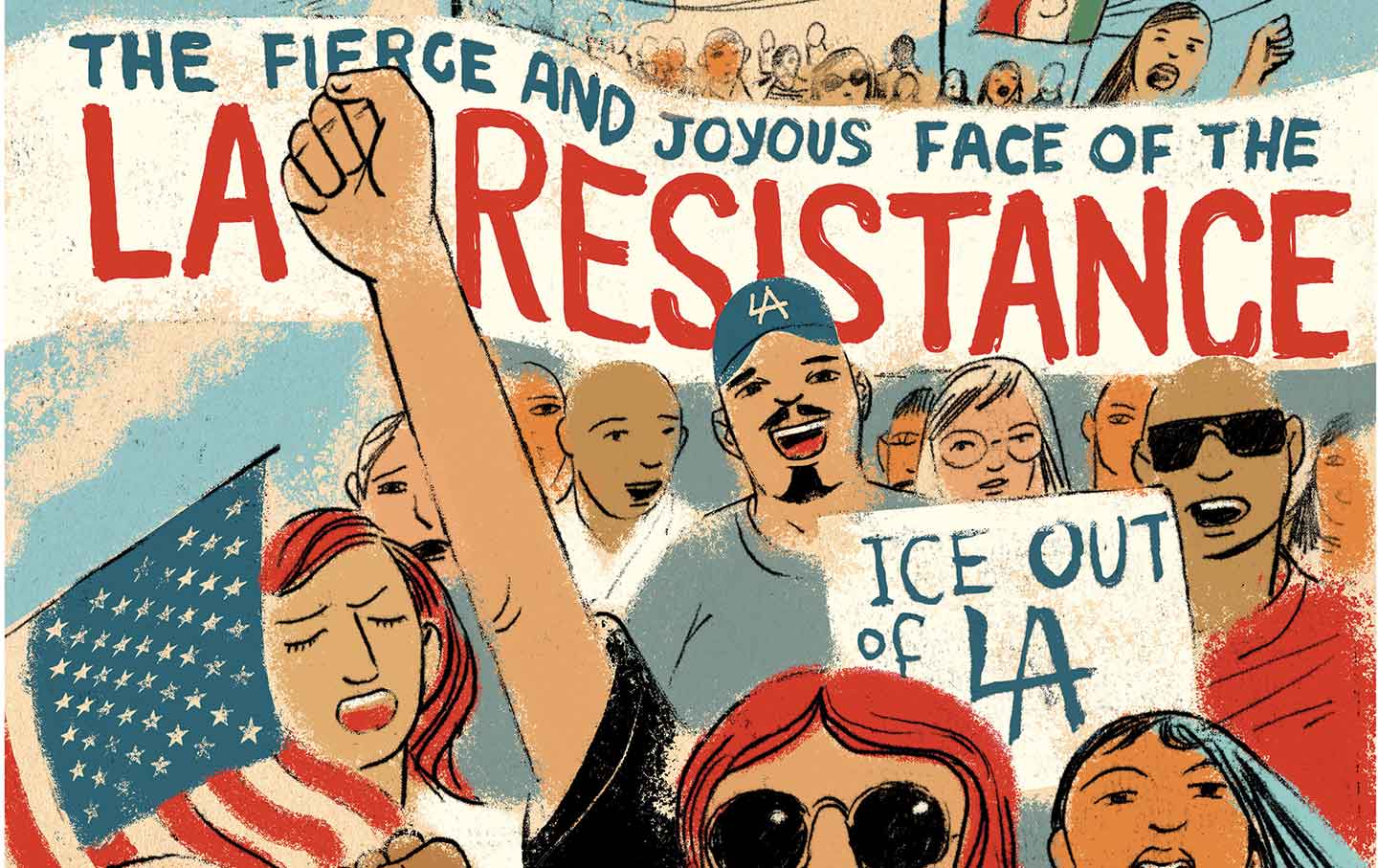
The Fierce and Joyous Face of LA Resistance The Fierce and Joyous Face of LA Resistance
What we can learn from a great American city’s refusal to bend to Trump’s invasion.
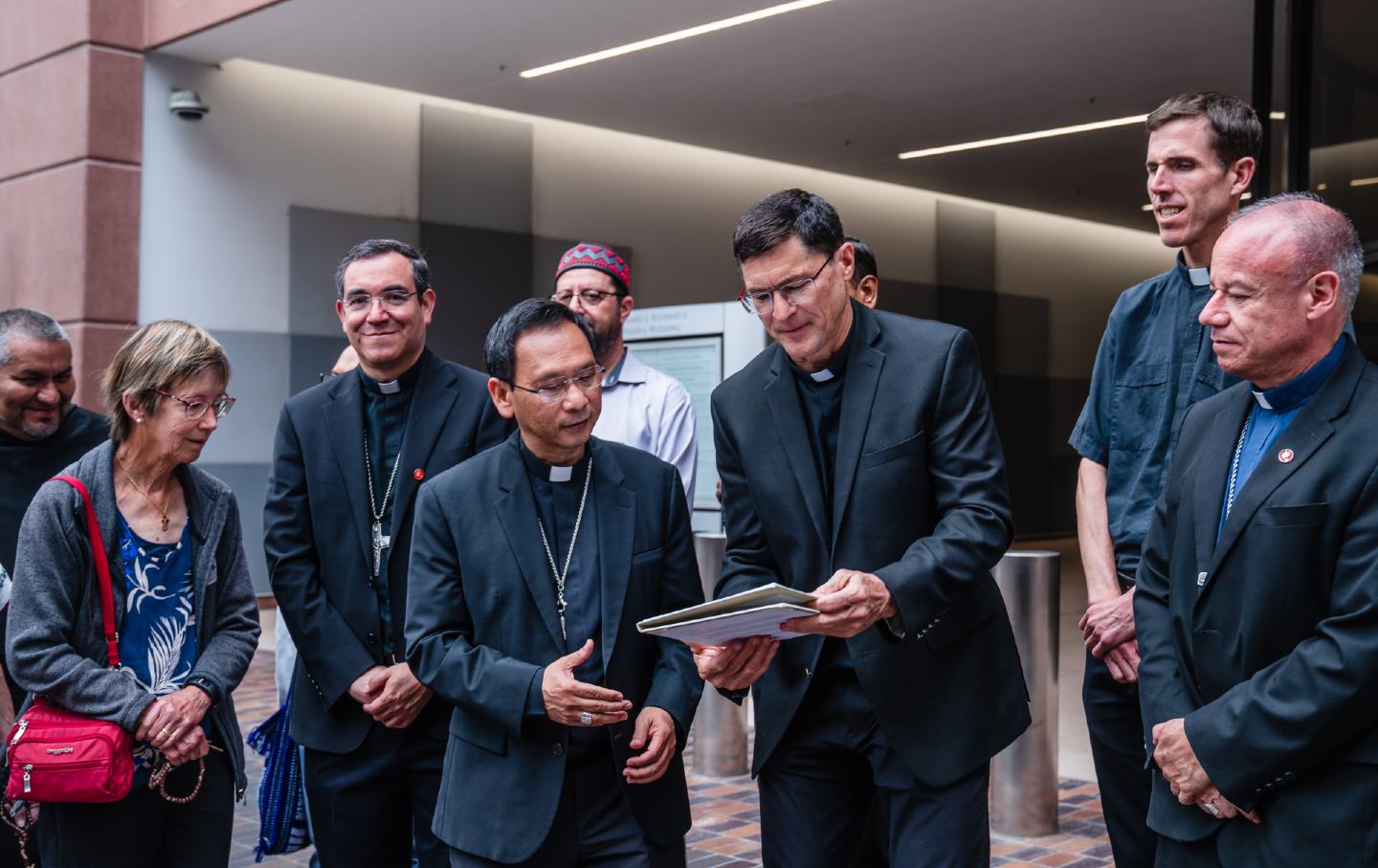
San Diego’s Clergy Offer Solace to Immigrants—and a Shield Against ICE San Diego’s Clergy Offer Solace to Immigrants—and a Shield Against ICE
In no other US city has the faith community mobilized at such a large scale to defend immigrants against the federal government.
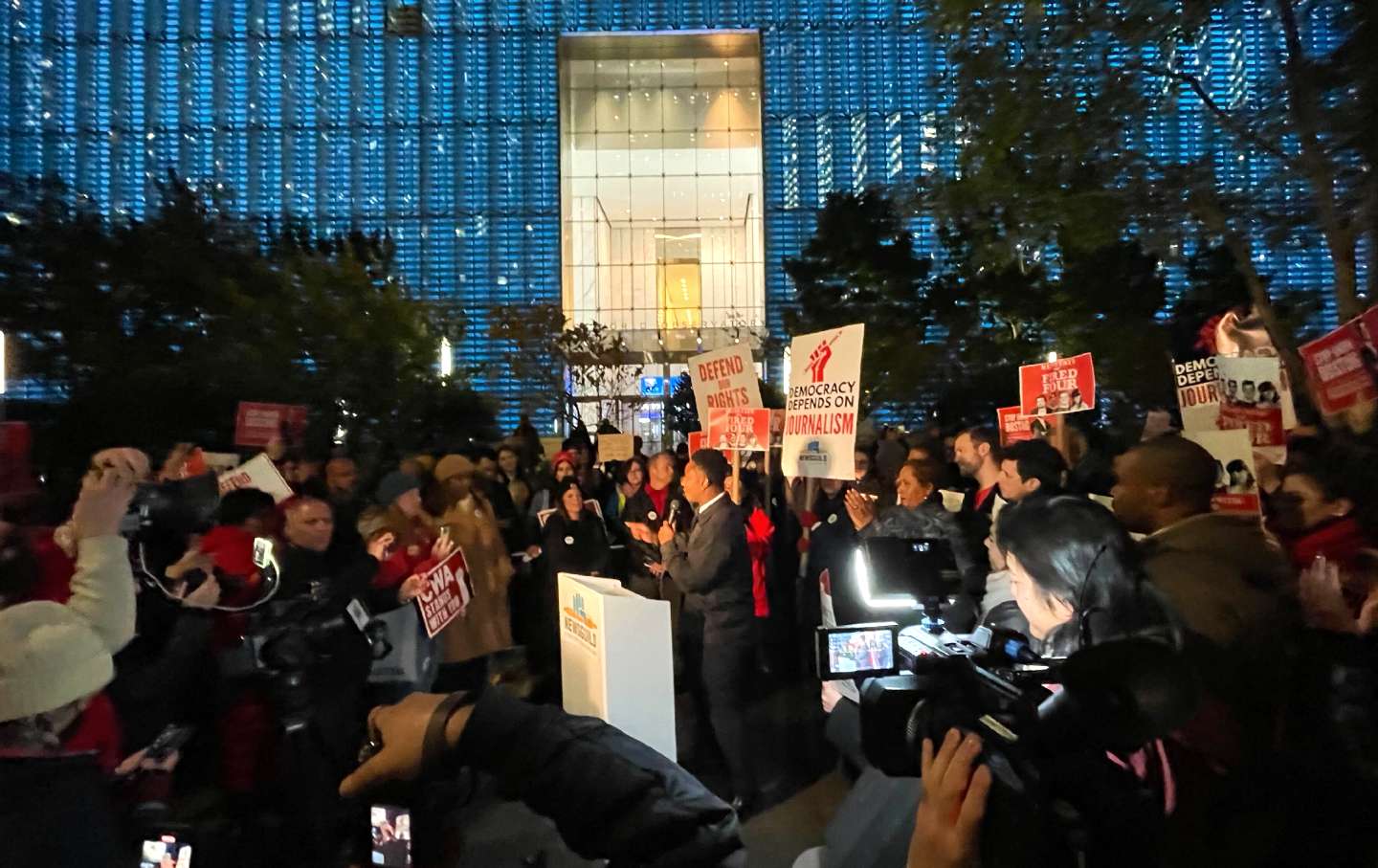
If Condé Nast Can Illegally Fire Me, No Union Worker Is Safe If Condé Nast Can Illegally Fire Me, No Union Worker Is Safe
The Trump administration is making employers think they can ignore their legal obligations and trample on the rights of workers.
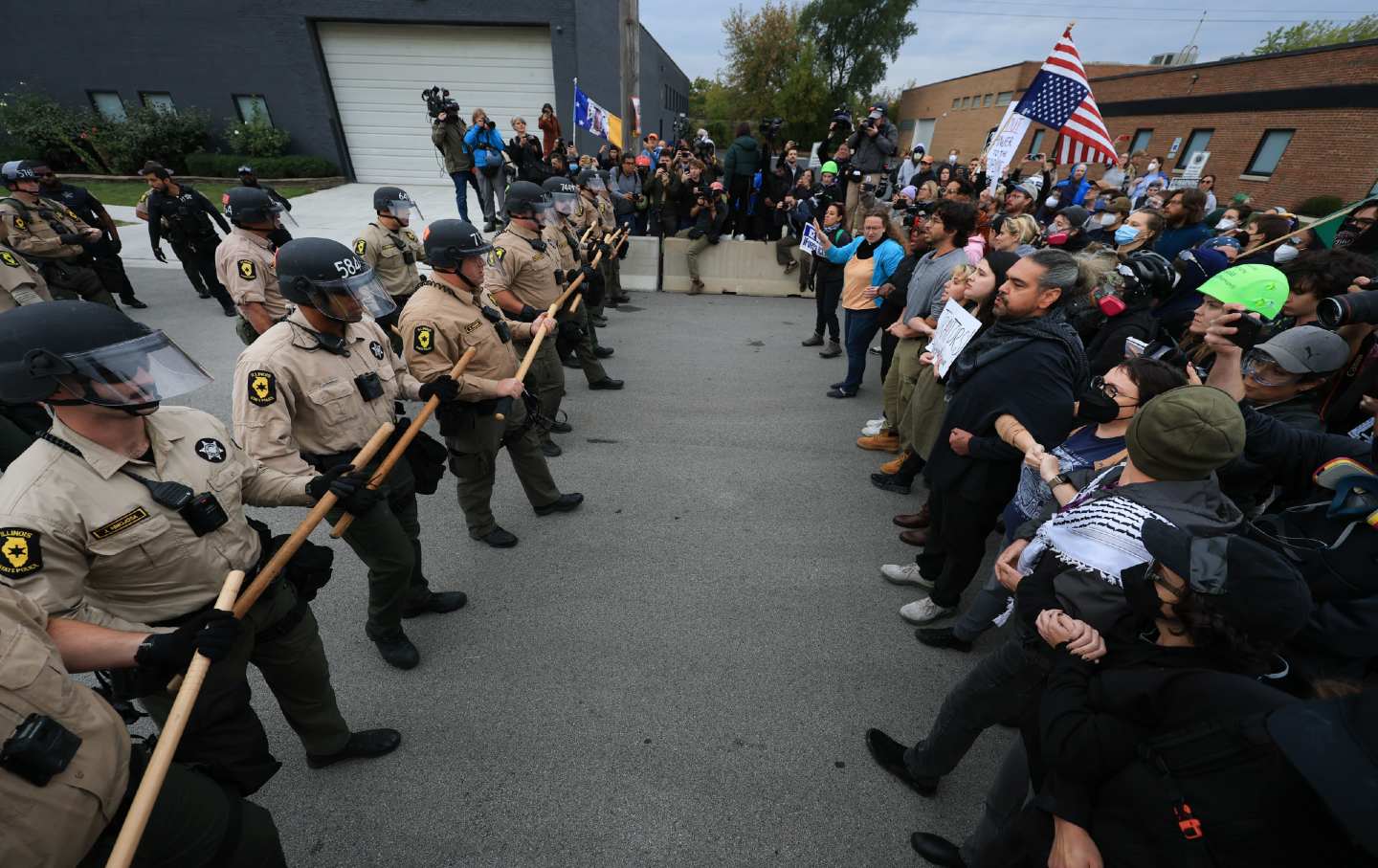
The Counteroffensive Against Operation Midway Blitz The Counteroffensive Against Operation Midway Blitz
How Chicago residents and protesters banded together against the Trump administration's immigration shock troops.


